It’s not hard to get a lot of photos in Lightroom … and I do mean a LOT of photos. Ten-thousand, twenty-thousand, one hundred-thousand. I’ve seen some pretty big catalogs. What do you do when you need to find one of those images? This is where keywording in Lightroom saves the day.
… when photographers starting migrating to digital storage, most of them stick with the old folder method.
In the old days, we had prints in labeled notebooks or slides in well-organized file cabinets. Old habits die hard, so when photographers starting migrating to digital storage, most of them stick with the old folder method. While keeping images in folders does narrow down the process of finding the photo you’re looking for, it’s far from perfect.
Take this photo, for example:

What folder would you put that in? Well, it could certainly go in a “skiing” folder, but what if I wanted to look at all of my photos of my friend Brad? He and I mountain bike and kayak together, as well. What if I needed to find all of the images of this local ski resort, or the specific brand of snowboard he’s carrying? I’d have to make multiple copies of this image to keep one in each relevant folder. No, thank you!
When I stop and think about it, my images rarely, if ever, fit into a single category or folder. That’s where keywording in Lightroom come in.
What are Keywords?
Keywords, also known as “tags,” are words or phrases that describe an image or portion of an image. For our photographs, keywords are stored in comma-separated list. That means that “brown bear” is one keyword and “brown, bear” is two keywords.
In Lightroom’s Library Module, there are two panels on the right that help you manage your keywords.
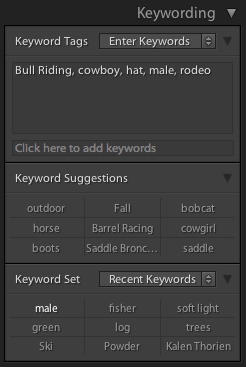
The Keywording Panel lists the keywords applied to the selected image(s) and allows you to easily add keywords to images by typing the word or clicking on the Keyword Suggestions or Keyword Set lists.
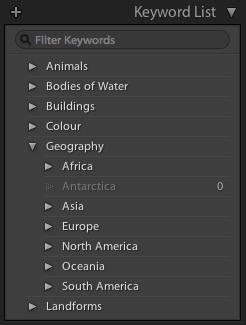
The Keyword List Panel contains a hierarchical view of all of the keywords you are using or have used in your catalog as well as any keywords you may have imported or added manually.
Choosing your Keywords
How you use keywords, or “tags,” on your images depends a lot on your specific needs. When choosing keywords, I ask myself, “how might I need to locate this image in the future?”
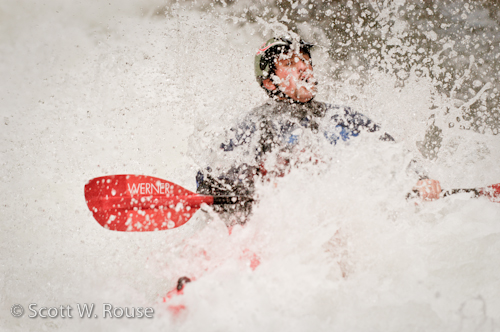
Typically when keywording in Lightroom, a good keyword is one, single word.
For the image above, I’d definitely include the keywords “kayak.” “male,” and the name of the paddler. Since I may want to market this image to the manufacturer of the paddle, the keyword “Werner” is important to me. If you don’t sell your photos, then that keyword may be irrelevant. Photographers selling stock, however, may want to include additional keywords such as “splash,” “droplet,” and “fear.”
What Makes a Good Keyword?
Typically a good keyword is one, single word. If your keyword is more than one word, make sure that’s really necessary. Anything more than two words and you could definitely refine it.
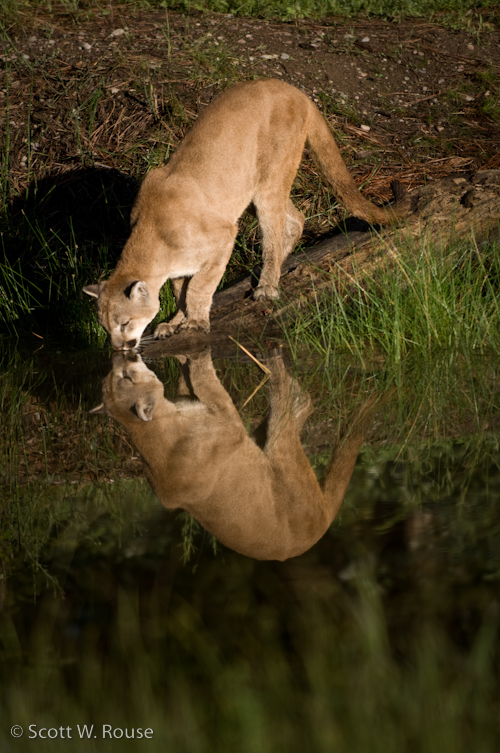
If you were keywording in Lightroom, what keywords would you give this image? I’ve seen too many photographers try to use keywords such as “mountain lion reflection” or “mountain lion drinking” to describe images like this. Those aren’t keywords; those are descriptions.
The keywords are:
- mountain lion
- reflection
- drinking
- pond
- triangle
- green
- brown
- water
If I want to find an image of a mountain lion drinking, I can do just that using the keyword list above. If I commit to a compound keyword such as “mountain lion drinking,” I’ve really limited my flexibility in the future.
In reality, I use many more keywords than most photographers I meet. Because I teach photography, I use keywords that help me find images that demonstrate the Rule of Thirds, motion blur, depth of field, and more. Though those techniques are important to most photographers, they rarely need to find an image that clearly illustrates the Rule of Thirds.
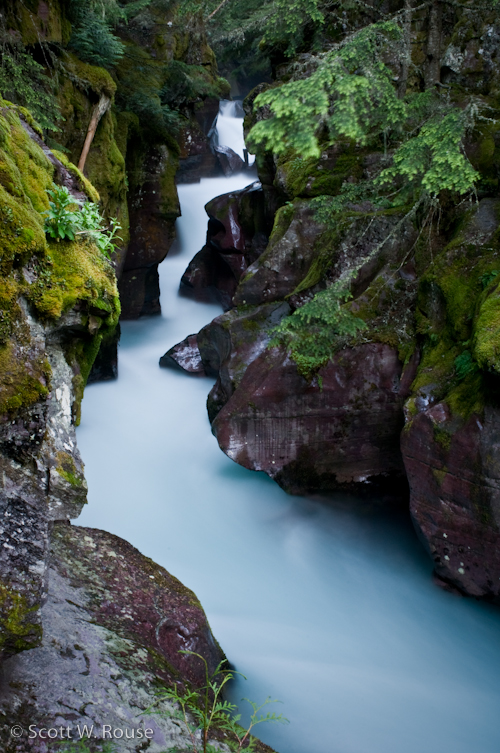
Raise your hand if you recognize this photo. Many of you will know it as the (probably over-photographed) Avalanche Creek in Glacier National Park. Here are my keywords for the above image:
- creek
- waterfall
- rock
- motion
- moss
- red
- green
Why don’t I have keywords such as “Avalanche Creek” and “Glacier National Park” for that image? That’s probably the first thing I’d think of if I were looking for this image.
I don’t use location names in keywords because there are other metadata fields that are much better suited for those purposes. The Location, City, State/Province, and Country metadata fields are where I store this important location information. That may not be the best answer for everyone. Let’s say you were putting this photo online for sale as stock. You’d want to make sure that you had “Avalanche Creek,” “Avalanche Gorge,” and “Glacier” as additional keywords on this image to help others find it.
Applying Keywording In Lightroom
There are too many ways to apply and edit keywords to discuss them all in this post. The easiest way is to select the image or images to which you’d like to apply keywords and type the keywords you want to add (one at a time, hitting the Enter or Return key after each one) into the “Click here to add keywords” box in the Keywording Panel.
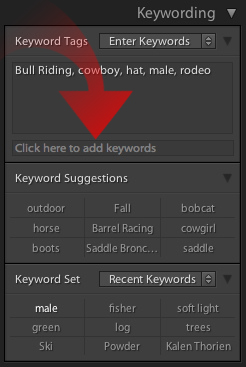
Tackling the Job
Chances are most of us don’t have as many images keyworded as we’d like. Looking at your vast image library with barren keyword fields can be a bit intimidating. Don’t sweat it, though. Start with broad keywords on groups of similar images, then narrow it down. Conversely, just make a commitment to diligently keyword all newly imported images from here on out and go back and tackle an old folder or two now and then. You can do it.
note: for more details on keywording, check out our post on setting up and choosing keywords in Lightroom.


